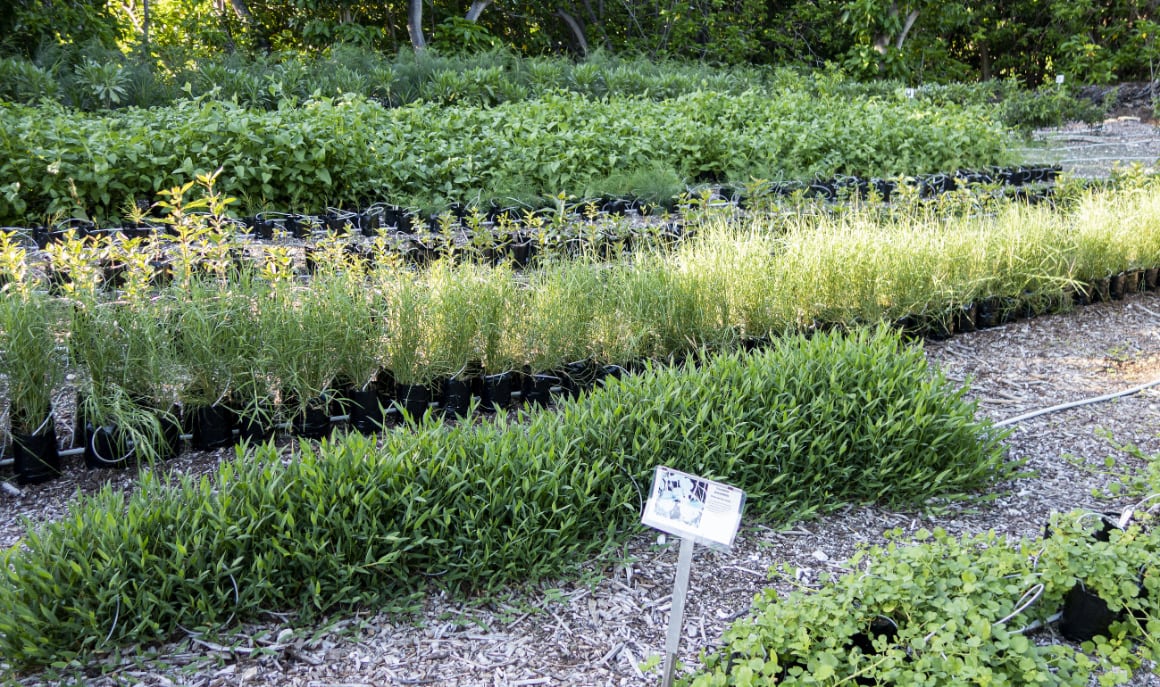“I’m seeing things in four and a half years I didn’t expect to see in my lifetime”
Jim Buck, Ecosystem Manager – Lady Elliot Island
In the late 1800’s, Lady Elliot Island was mined for guano, a process which decimated the island’s vegetation. The introduction of goats also contributed to the devastation of the foliage for over 70 years. Lighthouse Keepers, early work by the newly established resort in the 1970’s and continuing intermittent revegetation activities since have all contributed to ‘greening the barren rock’. Whilst these combined efforts have been successful in many areas, in many ways, there is a legacy of approximately 120 introduced exotic species resident on the island.
The current revegetation program funded by the Great Barrier Reef Foundations ‘Reef Island’s Initiative has made great ‘in-roads’ into restoring this coral cay’s native vegetation.
High levels of rainfall in recent years have assisted the revegetation program by accelerating the incredible progress. This update of the program will share the progress of many different areas across the island. Join us on a tour with Jim as he describes the works over the last 4.5 years!
Of the island’s 40 Hectares, 10.5ha are human use areas and 29.5ha are termed natural areas. In the last 4.5 years, 50% of the natural areas have now been subject to a ‘first pass’ revegetation process, 4.9ha of coastal zone and 10.0ha of interior areas. Of the interior areas, Pisonia forests make up a significant proportion of the works completed to date. Pisonia forests generally require limited maintenance in their development phase as the trees ‘shade out’ most weeds as the canopy develops and ‘closes’. We are experiencing Pisonia forest canopy closure in generally 3 – 4 years. Pisonia forests also include many supplementary species, including, Sandpaper Figs, Native Mulberries and Native Elms.
In contrast, the coastal zone requires continuing maintenance for many years as grasses and ground covers develop to control the exotic species. Each area comprises three vegetation layers: a tree layer (Casuarina, Pandanus, Cordia), a shrub layer (Native Mulberry, Sandpaper Fig, Abutilon) and ground layer (grasses, vines, and ground covers).
Most of the areas revegetated to date have been infested with Lantana, Umbrella Trees, Dwarf Poinsettia, Nightshades, and a plethora of other exotic species. One of the successes of the project has been the development of simple and practical methodologies, based on available resources, to manage exotic species and to successfully plant and establish native vegetation.
The programs most important early success was the development of a successful ‘on-site plant nursery’ to provide the plant stocks necessary for such a large project in a remote world heritage location. Good ‘mid to long term’ planning is required to ensure stocks of the necessary plants are available. Having the correct species of plants available in the required numbers at the correct stage of the plant’s development is essential to success.

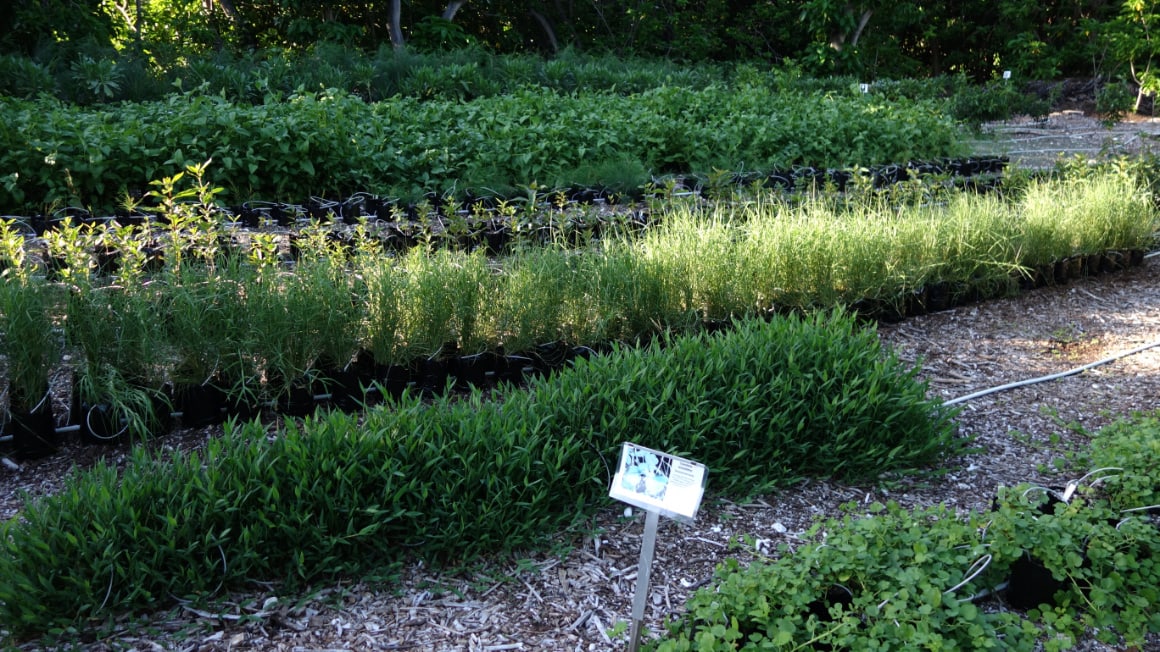

The graphic below shows the progress of the program over the last 4.5 years. The ‘light Blue’ areas across the island have been the subject of revegetation efforts.

Staff, volunteers, and contractors continue to provide the resources necessary to deliver this program. Whilst the remote location offers up some unique challenges in the delivery of this program, the successes achieved make it well worth the effort.
Exploring the images and commentary below will help gain an appreciation of what has been achieved in a relatively short period of time.
Location 1 – Located within the islands southern coastal zone, this area has been revegetated with native grasses and ground covers. Casuarina, Argusia and Pandanus have been planted to develop a natural foreshore windbreak which supports the development of an inland Pisonia forest. Prior to revegetation, this area was heavily infested with Khaki weed, Dwarf Poinsettia and older trees which are close to the end of their life. This area has progressed significantly, with maintenance weeding required every 6 – 8 weeks, removing small amounts of weed.
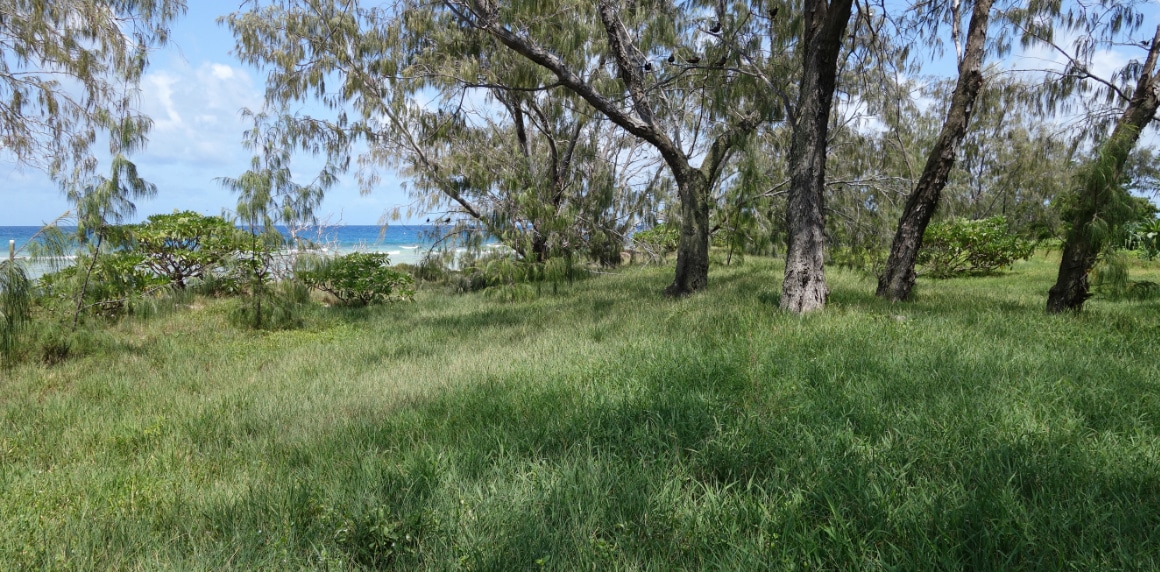
Location 2 – In the south–west corner of the island works have included planting 120 Pandanus and native grasses in this area. Behind the Pandanus is a thriving Pisonia forest which has grown exponentially over the last four years. Both the Pandanus and Pisonias originate from southern Great Barrier Reef genetic stock and have been propagated from seed and cuttings.

Location 3 – A large mobile ‘sand drift’ had developed on the south–west corner of the island. Spinifex, a hardy and wind resistant grass species has been established to stabilise the area. Scaevola, Necklace Bean, Casuarina and Octopus Bush have also been established throughout this location. The casuarinas in this location beside Jim are around 3 years old and are displaying extremely successful growth rates. Beach Sunflower and Chinese Lantern have flourished, developing a changing and stable ecosystem. The removal of the dominant exotic species has allowed native species to establish and now dominate the area.
Location 4 – This coastal zone area extending north from the SW corner to the historic lighthouse precinct was revegetated in early 2021. Growth rates of the coastal species, trees, shrubs and a myriad of ground covers and grasses have been extraordinary. A mature native ‘Strangler Fig’, one of only 12 on the island, is located in this section. These are magnificent trees with their developing ‘prop’ root systems.
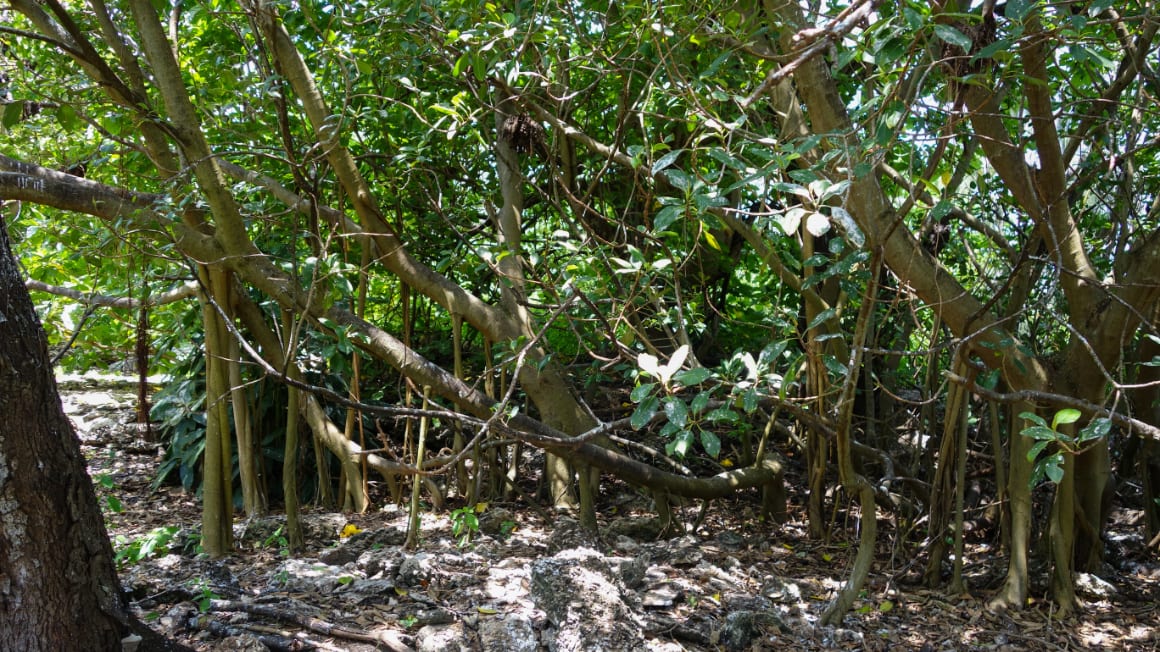
Location 5 – The islands disused ‘east–west’ airstrip, extending from the resort to the Lighthouse Precinct has been a blank canvas of mowed exotic grasses for many years. In late 2021 works were undertaken to transition parts of this human use area back to native vegetation. The extension of the adjoining Pisonia forests has also included developing a safe walking trail separated from the road, which in time will become a vegetation tunnel making the walk to the Lighthouse precinct a cool and pleasant experience. Native Mulberry have also been included in plantings throughout this area. Native Mulberry produce a small white fruit which is a favoured food source of Capricorn Silvereyes and Buff-banded Rails. As a pioneer species, these bushy emerald green trees grow quickly.
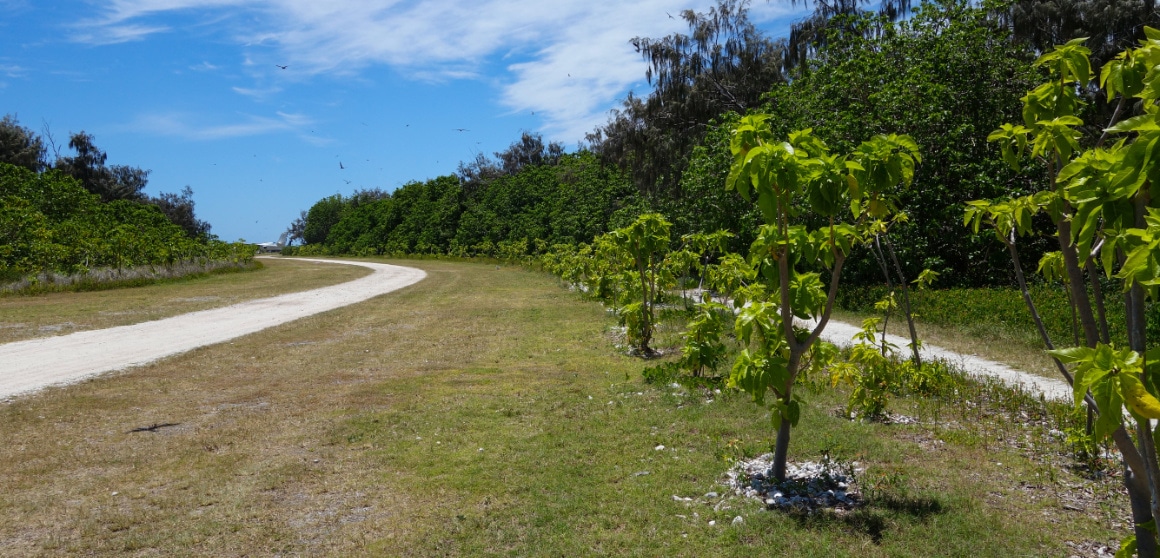
Location 6 – Associated with the revegetation works of the disused east-west airstrip, old ‘overhanging’ Casuarina which had a history of dropping branches were removed from the area adjoining the historic cemetery. A Native Mulberry and Sandpaper Fig grove has been established and surrounds this historic location. Pisonia currently form a backdrop to this area.

Location 7 – A number of old ‘end of life’ Casuarinas have recently been removed from an area in the Lighthouse Precinct and replaced with Native Elms, a tree which exhibits a very stately appearance as they mature to a 15m tree. Also, non-native Cotton trees adjacent to the first Lighthouse Keepers house have been removed and replaced with Native Mulberry, Sandpaper Figs and ground covers. This strategy harmonises with the natural theme being developed adjacent to the Cultural Heritage Precinct with its protected heritage vegetation.

Location 8 – Extensive revegetation works have been undertaken in the coastal zone adjacent to the Lighthouse Cultural Heritage Precinct. These works commencing in 2019 have replaced Lantana, Agarve, Umbrella trees and Green Panic Grass with a broad range of native coastal, trees, shrubs and ground covers.

Location 9 – A new Native Elm Forest is being developed in the centre of the island in the transition zone between the Pisonia forest and the north-east open shrublands. The planting incorporates a majestic ‘Strangler Fig’ which will act as a ‘centre piece’ for the foreseeable future until the Elms start to mature. This vista, which is already visible from Coral Gardens will be a future landmark. Ground covers have been planted to eventually assist in the suppression of weeds. The area has an annual significant Mutton Bird nesting population, which will be supported by this vegetation structure. The watering system installed in this area can be seen in the photograph and would be in place for 4 months.
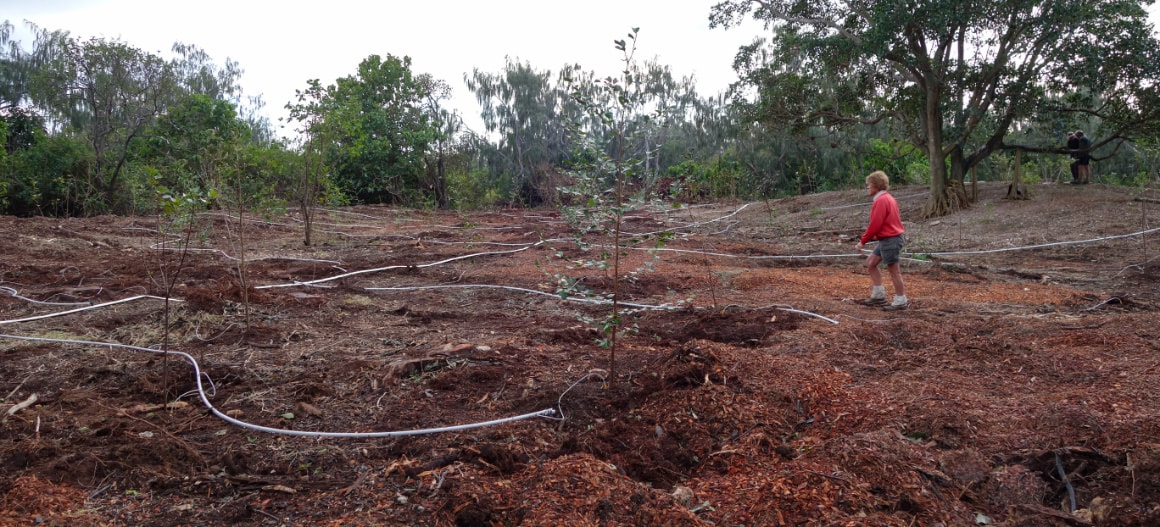
Location 10 – At Coral Gardens in the island’s north-west, the vegetation has been developed to support nesting sea turtles. The images show the extensive cover of native Bird’s Beak Grass and other groundcovers. The new Casuarina trees in the picture are three years old. The works in this important turtle nesting area removed significant numbers of fallen trees and debris, relocated the vehicle turn-around area and increased the available area for turtle nesting by 125%
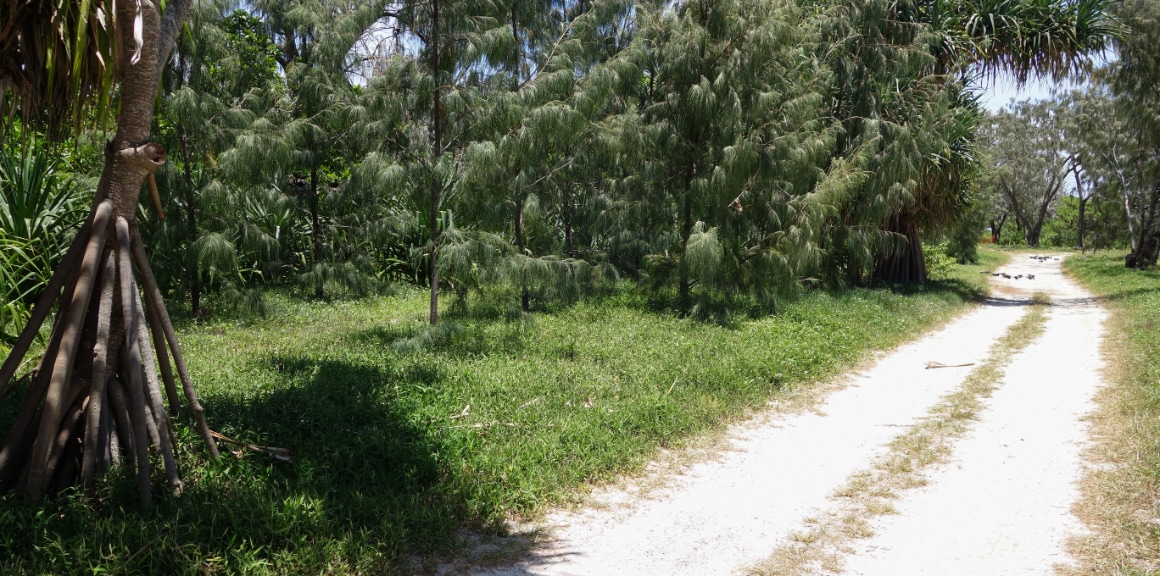
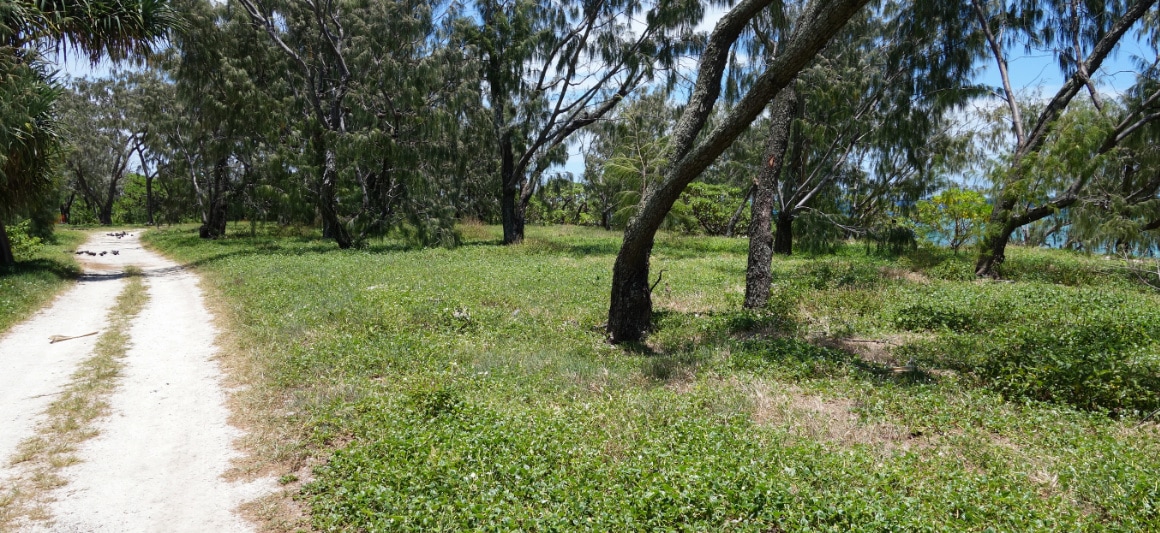
Location 11 – In the islands north-west near Coral Gardens, the north-west walking trail has been closed temporarily for extensive work. Revegetation works in this location were undertaken in 2021 with significant growth in the last year. 150 Pandanus have been added to this area, plus the introduction of native grasses. On the other side of the track mass planting of Sandpaper Figs has been undertaken to develop a thicket of fruit bearing trees to support fruit eating birds such as Buff Banded Rails and Silvereyes. Other introduced fruit bearing plants include Native Mulberry and Gum Fruit vine.
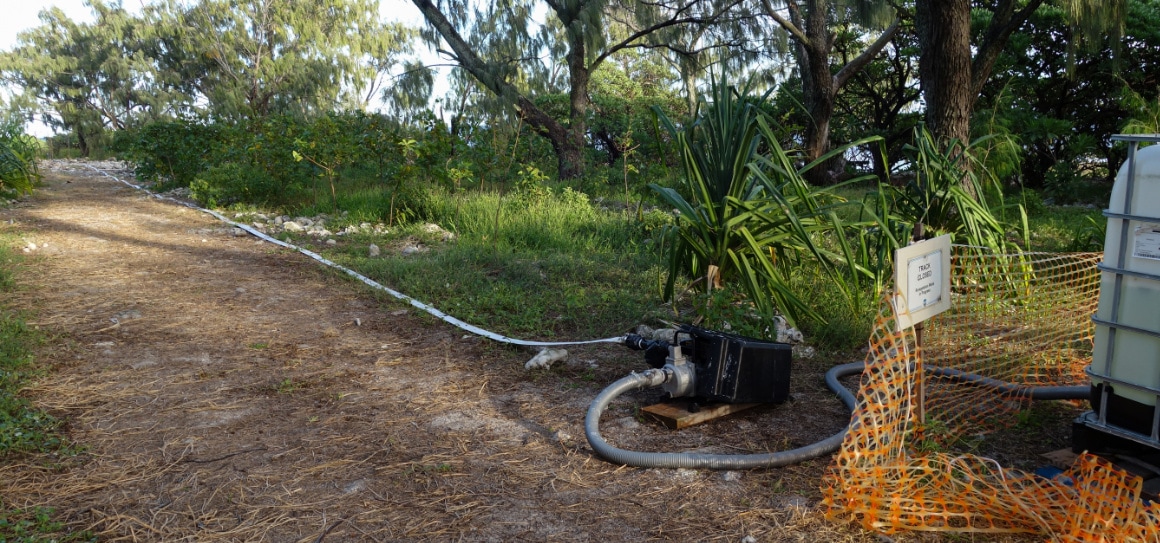
Watering systems are installed in all revegetated areas for a minimum of four months. Plants are watered 10 to 12 times in the first month to aid establishment and encourage deep root development. The following 3 months of watering allow the plants to be gradually ‘weaned off’ the water supply. The amount of water involved in each watering varies dependant on soil types, time of year, species of plant, etc., but with a minimum of 2 litres per plant.
Planting trees in this coral rock environment is difficult. The ‘ripping attachment’ fitted to the loader in this photograph, allows trenches to be to be formed in the coral rock. Many methods have been attempted in the past, including picks, shovels, augers, backhoes, and other loader attachments. Whilst this attachment is highly successful, it has been known to struggle on some occasions.
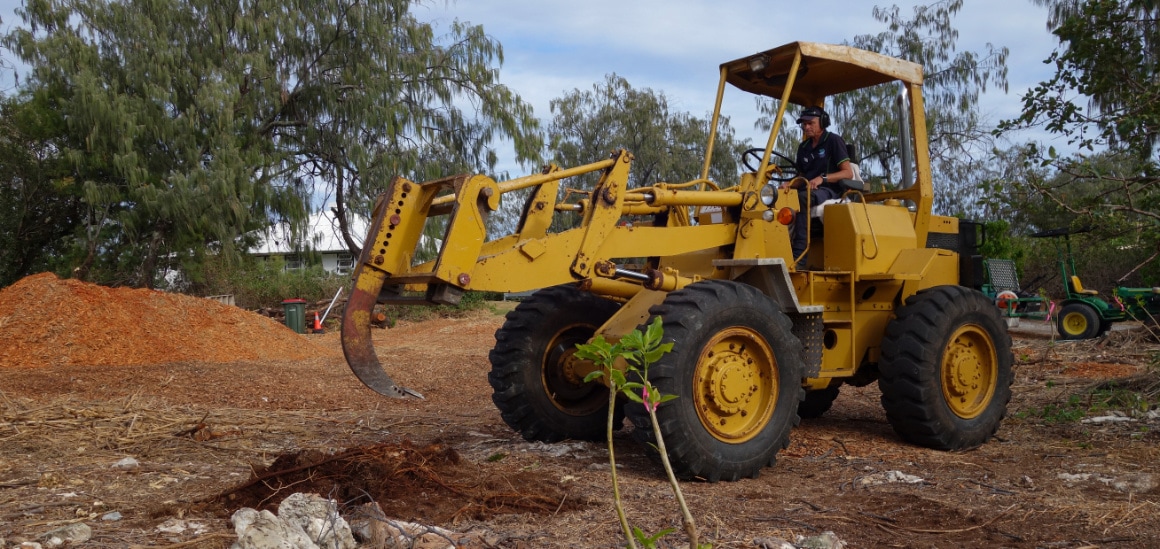
Now at the ‘half way point’ of the area to be revegetated, the program is functioning well. There have been some challenges along the way, but they just make you appreciate the successes all that much more!
The Revegetation Team:
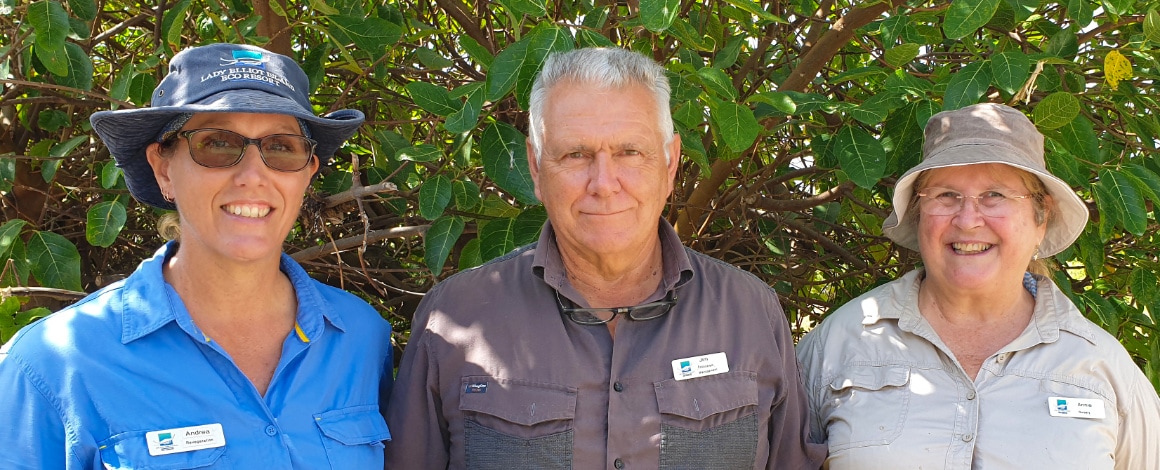
Andrea, Jim & Annie
The Great Barrier Reef Foundations ‘Reef Islands Initiative’ is establishing a network of climate change refuges by protecting critical habitats on Great Barrier Reef islands. Pioneered by the Great Barrier Reef Foundation, this $AUD 14 million, 10-year program is supported by funding from Lendlease, the Australian Government’s Reef Trust, the Queensland Government, the Fitzgerald Family Foundation and the Sunshine Coast University.




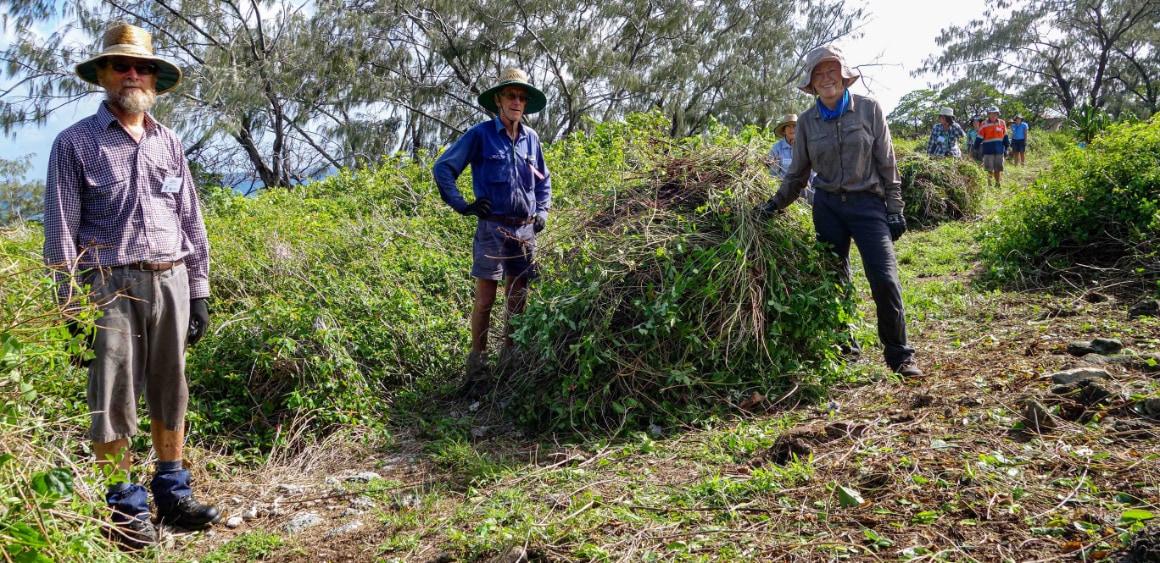

















 Snorkel & Dive
Snorkel & Dive Sustainability
Sustainability